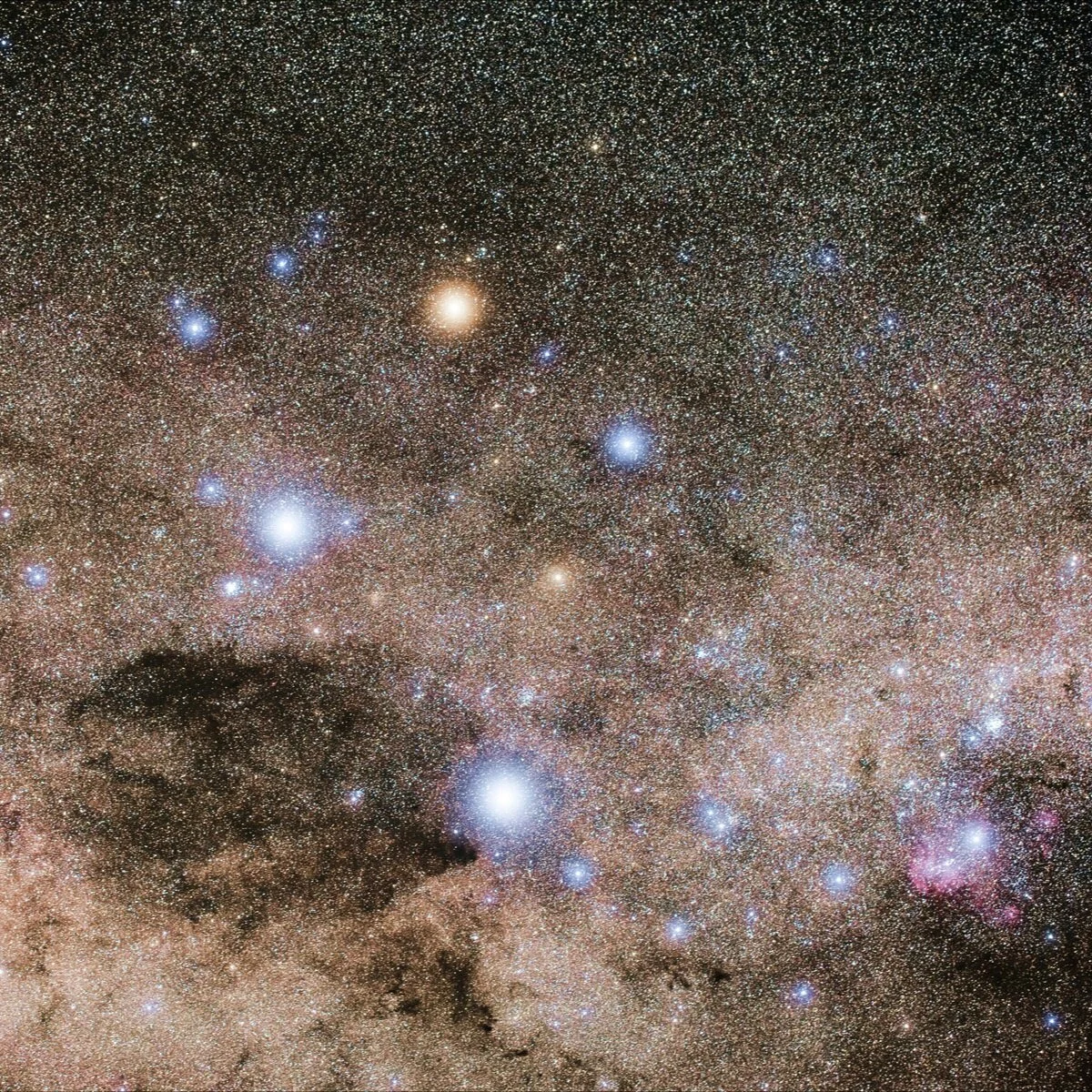I am unusually susceptible to “IMI.” No, I didn’t make that up. That’s a real term for “Involuntary Musical Imagery,” or as the Germans call it, Ohrwurm, an “earworm.” I get songs stuck in my head. A lot. It is as true today as it was just over a year ago when Stephen Stills' voice was on mental repeat singing “When you see the Southern Cross for the first time…” Those lyrics from the 1982 Crosby, Stills, and Nash song, Southern Cross, looped through my head for weeks. Often these earworms seem random, but this time the source of the infection was obvious. I was about to do just what Stephen Stills was singing about. I was headed to the equator, to the Galápagos Islands, where I would see the actual Southern Cross for the first time.
Once I arrived I didn’t have to wait long. Sunset comes early at the equator, light and dark dividing the day right down the middle all year long: twelve hours of intense sun followed by twelve hours of black night. Our group would spend every minute of those twelve daylight hours exploring the islands and their incredible wildlife. Upon returning to our catamaran after sunset, we would enjoy dinner together and reflect on our day of photography. But after dinner I found myself drawn to the upper deck where I would lie in solitude and stare into the vastness, deep, dark, and unblemished by manmade light some 600 miles from the coast of Ecuador.
Crux, the Southern Cross | Naskies at en.wikipedia / CC BY-SA (https://creativecommons.org/licenses/by-sa/3.0)
Until that first night onboard, the Southern Cross somehow remained an abstraction, just a lyric from an early 80s rock song I didn’t even really know. Despite the fact that this smallest of the modern constellations had been there in that same spot for billions of years, I remained oddly anxious, like it might not show up on schedule. But then there it was, unmistakable, suspended in the blackness in its twinkling blue-white simplicity, the constellation Crux, better known as the Southern Cross. Unlike many constellations which are at best a loose interpretation of their namesakes, the Southern Cross is completely unambiguous, with its points defined by four unusually bright stars in the southern sky. The image of these stars against the equatorial night stays with me because seeing them somehow made concrete what would have seemed fantasy a year prior. This could not be real. Could I really be this fortunate? Surely not. Yet there I was, on a catamaran sailing between the islands of the Galápagos archipelago, passing the days with my camera, spending hours walking with new friends in the footsteps of Darwin himself, just a few yards from animals I never imagined I would see in the wild. This was really happening. The Southern Cross was right there to prove it.
I took this photo of American oystercatchers on San Cristobal Island during the last minutes of our last full day in the Galápagos. American oystercatchers are not endemic to the Galápagos, but of all the images I took in the islands, this series takes be back there most vividly, most immediately. We were wandering the wide sand beach with our cameras, savoring our last hour on this hallowed ground as the sun dropped rapidly toward the western horizon. Sunsets at the equator are beautiful, but fleeting. I found myself away from the group where I noticed these birds, and walked further still to get closer. What first caught my eye was not the oystercatchers, but the iridescent green moss on the black lava rock outcrop where they were foraging. After ten days in the islands I was still taken aback by the animals’ lack of fear. As I walked slowly toward them I could not help but expect them to flush at any moment, but of course they didn’t. These were not ordinary birds. These were Galápagos birds. I waded into the shallow surf and into a private world with this trio of oystercatchers - the adult (left) and juvenile (right) in the photo above plus a third nearby. They were busy using their perfectly adapted, long, flat bills to pry mollusks loose from the rocks. I spent the last thirty minutes of that evening alone with them as the sun, glancing low over the Pacific, bathed us in golden light. The intimacy and perfect purity of those moments, just me, the birds, and the gentle waves, was indescribable. It is difficult for me to articulate the emotions of that experience. I’m not even sure a “me,” separate from nature, was present at all. For those few minutes, I was just another an integral part of reality, no different from the birds or the ocean or the volcano that formed the island beneath my feet. It brings tears to my eyes even as I write about it a year later. Everyone should know such peace.
That was almost exactly one year ago, 2,700 miles away in the middle of the ocean, in one of the most sacred wildlife habitats on earth. Today I am writing from my home, where I have spent the vast majority of the last three months as we navigate a global pandemic. A year ago I was mildly annoyed by the classic rock earworm that had infected my brain. Today we must all worry about much more serious infections. This, too, is really happening. How quickly our lives can change. We tend to imagine that the future will be a slightly modified version of the present, when in fact it is often radically different. In May two years ago, I could not have conceived that just one year later I would be waist deep in the surf photographing shorebirds in a Galápagos sunset. And as my flight home departed Ecuador one year ago, none of us could have conceived our current reality. The nature of this life is that we simply don’t know what another year will bring, and as humans we bear the unique burden of knowing that we don’t know, whether we admit it to ourselves or not.
Twenty-four months ago, a year into my future turned out to be unimaginably good. Twelve months ago, a year into our collective future has turned out to be a time of unimaginable uncertainty. What will a year from now hold? I have no idea. But I do know that staring into that infinite sky at a constellation of stars whose light was 321 years old by the time it reached my eyes filled me with awe. It reminded me that we are small, and that our daily, weekly, and yearly struggles are ripples in an immeasurable ocean. I find this thought comforting at times, and yet other times it does little to lessen the reality that for beings so small, even ripples feel like a raging storm in a universe too overwhelming to bear. But Stephen Stills’ lyrics in Southern Cross are about the power of that same overwhelming universe to heal us, and I believe he and the many others who have been similarly inspired have it right. We need not be anxious that it won’t show up for us. Like the stars of Crux, it is right there, right now, always available, and I too believe that experiencing ourselves as part of this amazing universe has the capacity to heal our wounds and nourish us when we need it most. If we can just find a way to notice it, to relax into it, to be with it fully, to be truly and completely present in it, you know it will.
And you know it will.
If you enjoyed this, please share it with the people you care about, follow me on Instagram, Facebook, and Twitter, and (best of all) consider subscribing via email using the form above.


